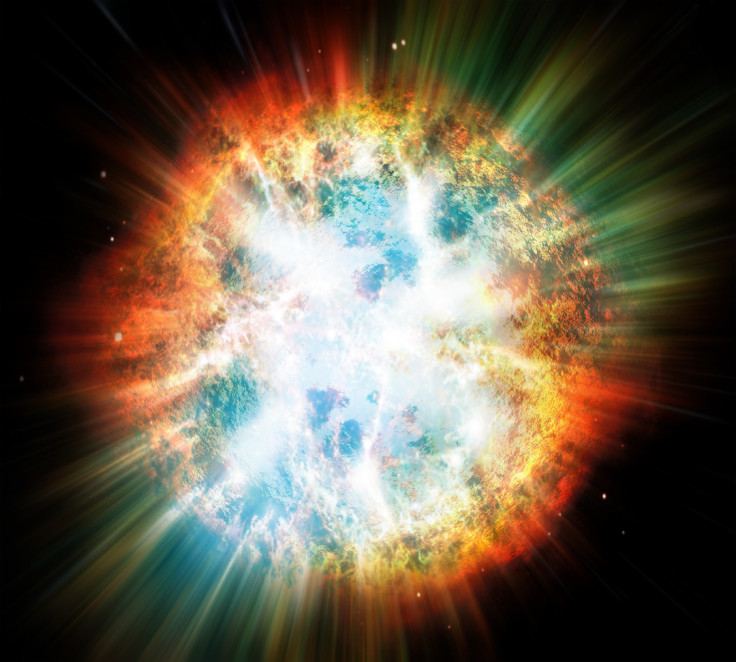Scientists watch supernova explosion for the first time
The team was able to observe the star just three hours after it exploded.
A supernova has been observed just hours after the explosion, providing scientists with the first observation of the early stages of this violent celestial event. Being able to record a supernova in this way provides an insight into what happens just before the destruction – with findings showing a large disk of matter accumulates in the years running up to its collapse.
The exploding star was spotted in 2013 by scientists using the Intermediate Palomar Transient Factory (iPTF). Located in NGC 7610, a galaxy in the Pegasus constellation 160 light years away, the star was then observed by astronomers using a range of telescopes, the data from which was put together to be analysed.
Publishing their findings in the journal Nature Physics, researchers led by Ofer Yaron, from the Weizmann Institute of Science in Israel, found they had witnessed a red supergiant exploding into a type II supernova. This is when a star at least eight times more massive than the Sun runs out of fuel and collapses as a result of its own gravity.
Analysis showed they had observed the star within three hours of it exploding – providing a much needed insight into what happens just before and after such an event. "The pre-supernova evolution of massive stars, which sets the physical backdrop to these violent events, is theoretically not well understood and difficult to probe observationally," they wrote.
"Here we report the discovery of the supernova SN 2013fs a mere three hours after explosion." Follow-up observations showed the star had been encircled by a disk of matter in the run-up to the explosion, with this material being ejected in the final year.

Because red giant supernova are a fairly common, scientists say the instabilities witnessed (i.e the disk of matter that is accumulated then ejected) could be a feature seen in many other exploding massive stars. "Future flash-spectroscopy observations of a larger sample of events would allow us to determine exactly how common this phenomenon is, placing stronger constraints on the final stages of massive-star evolution," they said.
Commenting on the study in a related News & Views article, astronomer Norbert Langer, from the University of Bonn, said: "Without the knowledge of when and where [young supernovae] are going to explode we tend to chance upon them when they are already several days old. By this time, the supernova ejecta have already swept through a large volume, destroying any information about its immediate environment. The first spectroscopic observation ... is thus a remarkable achievement, revealing that the dying star was embedded in a dense shell of gas."
He said increasing supernova surveys should mean we are able to record more early-stage supernovae in the near future, providing an ever-better view of these events: "We can thus hope that the early spectroscopic observations of SN 2013fs are the first of many more to constrain the pre-supernova circumstellar density distribution, the atmospheric structure of red supergiants at the time of their explosion, as well as the shock break-out phase."
© Copyright IBTimes 2025. All rights reserved.






















